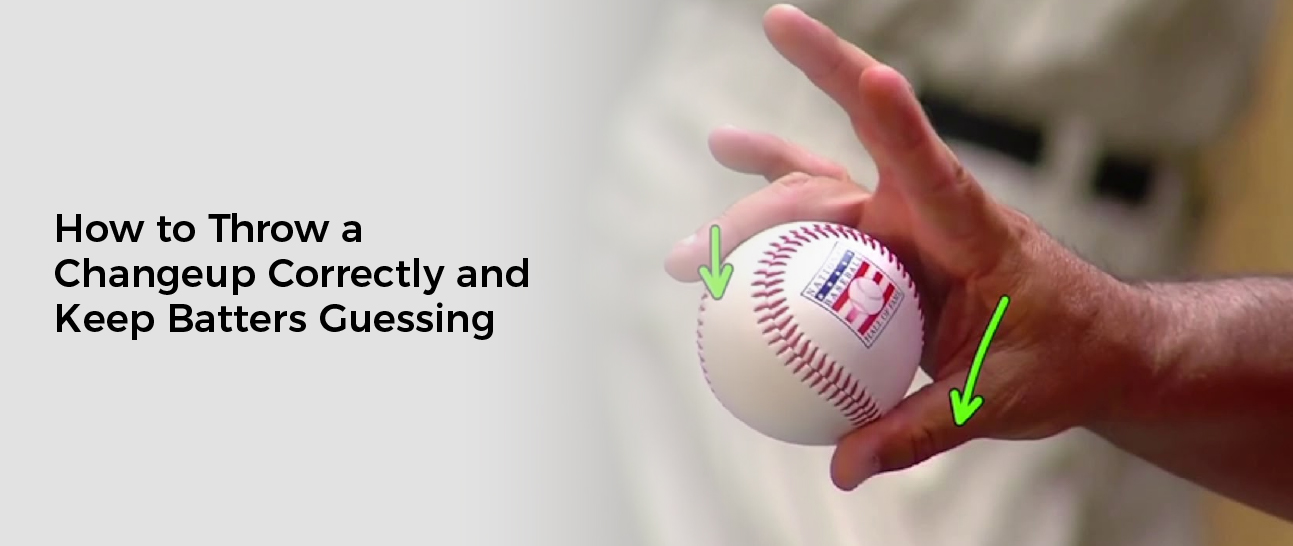How to Throw a Change up Correctly and Keep Batters Guessing

August 6, 2023
A changeup is one of the best pitches a pitcher can throw, as it can fool hitters and leave them off balance.
But throwing a change up properly requires a little practice and repetition. Here are some tips for getting started.
First, grip the ball with your index and middle fingers across the seams. This will help create a tight grip and distribute force evenly.
Grip
The changeup is one of the most popular off-speed pitches in baseball. It can confuse hitters by slowing down the ball as it approaches home plate. However, it is important to note that this pitch can only be effective if thrown correctly.
The first step to throwing a good changeup is to grip it properly. There are several different grips for this pitch, and it is important to find one that feels comfortable and easy to throw.
Some pitchers grip their changeups with their thumb and index finger, while others use the middle and ring fingers. In either case, the grip should allow the ball to move smoothly without any tenseness or pressure from the palm of the hand.
Another grip I have seen used by young pitchers is called a circle-change. This grip is very popular amongst the younger generation of pitchers and involves the index finger and thumb forming a circle on the inside of the ball. This is then firmly gripped with the middle and ring fingers.
This grip is extremely difficult to master, but it can help you develop a strong arm and control as well as a feel for this pitch. It’s also a great option for the younger pitchers on your team as it requires less wrist movement.
A young pitcher will benefit from learning how to throw a changeup, as it will help them learn a variety of different pitches in their arsenal. This will also help them develop their overall confidence in the throwing process and will improve their accuracy.
Release
Pitchers use the changeup as a deceptive pitch to keep hitters off-balance. This is because it travels about 10-20 miles per hour slower than a fastball. This helps to disrupt the hitter’s timing and keeps the ball from going straight to home plate.
To throw a changeup properly, pitchers must understand how to grip and release the ball correctly. They should also know when to throw it and how it will play off their other pitches.
The most common mistake that pitchers make when throwing a changeup is to fail to create deception by not applying any movement to the ball. This can result in a high swing and miss or an easy walk or home run.
Many pitching coaches will recommend a particular style for the changeup, but it is important that pitchers find the one they are most comfortable with. This is because each pitch needs to work for each pitcher in order to be successful.
A good way to learn the right grip for a changeup is to practice it with a friend or coach. Once you have the grip right, it should be easy to learn how to release the pitch without having to think too much about it.
To properly grip the changeup, place your thumb on the bottom of the ball and your middle and ring fingers between the two seams. This is a good position because it will allow your thumb to point directly at the ball, which will provide the pressure point that will hold it firmly in place as it’s released.
Arm Motion
A changeup is a pitch that can help pitchers get out of difficult situations in the middle of an at-bat. Unlike a fastball, the changeup requires minimal arm motion and is often effective when thrown after a fastball.
The most important factor to consider when throwing a changeup is your arm speed. Having the same arm speed as your fastball will help you sell this pitch to the batter.
To throw a changeup, you should grip the ball with your thumb and ring finger. This will help you throw the pitch faster. You should also make sure that you apply minimal pressure with your index and pointer fingers.
You should also try to throw the changeup as straight as possible. This will help you avoid losing control of the ball and allowing it to fly high over home plate.
Many pitchers make the mistake of lowering their arms as they throw a changeup. This can lead to the pitch flying high over home plate and making it harder for hitters to get a good hit.
Body Position
When you’re ready to throw a changeup, you’ll need to know how to body position the ball correctly. This will help you create a pitch that will be effective against different hitters and situations. You should practice this type of pitch in batting practice and on the field so that you can perfect your delivery.
The body position of a changeup is important because it helps you make the most of your arm movement. It also lets you control the speed of your pitch, which is crucial for getting batters out.
To body position a changeup properly, you should have your arms straight and your shoulders back. You should also use your legs to help you maintain proper balance as you deliver the pitch.
You should also try to be as strong and consistent with your arm as possible. This will allow you to throw the pitch with confidence, which will increase your chance of success.
Your changeup should be about 10% slower than a fastball. This will keep hitters off-balance and give you a better chance of striking them out.
There are many different ways to body position a changeup, and you should experiment with different grips until you find the one that works best for you. You should also practice throwing the pitch at different speeds and locations to ensure that it’s thrown effectively against different hitters.
The changeup is one of the slowest speed pitches, but it can be a great way to confuse hitters and keep them guessing. This is why it’s often used as a deception pitch in games.





